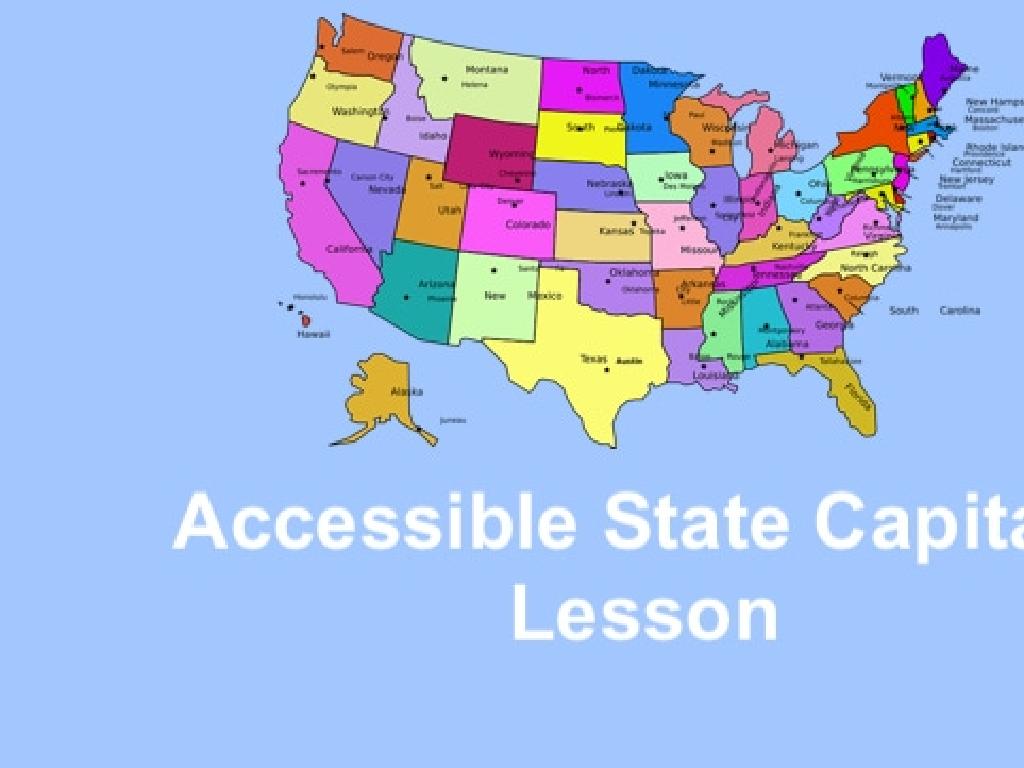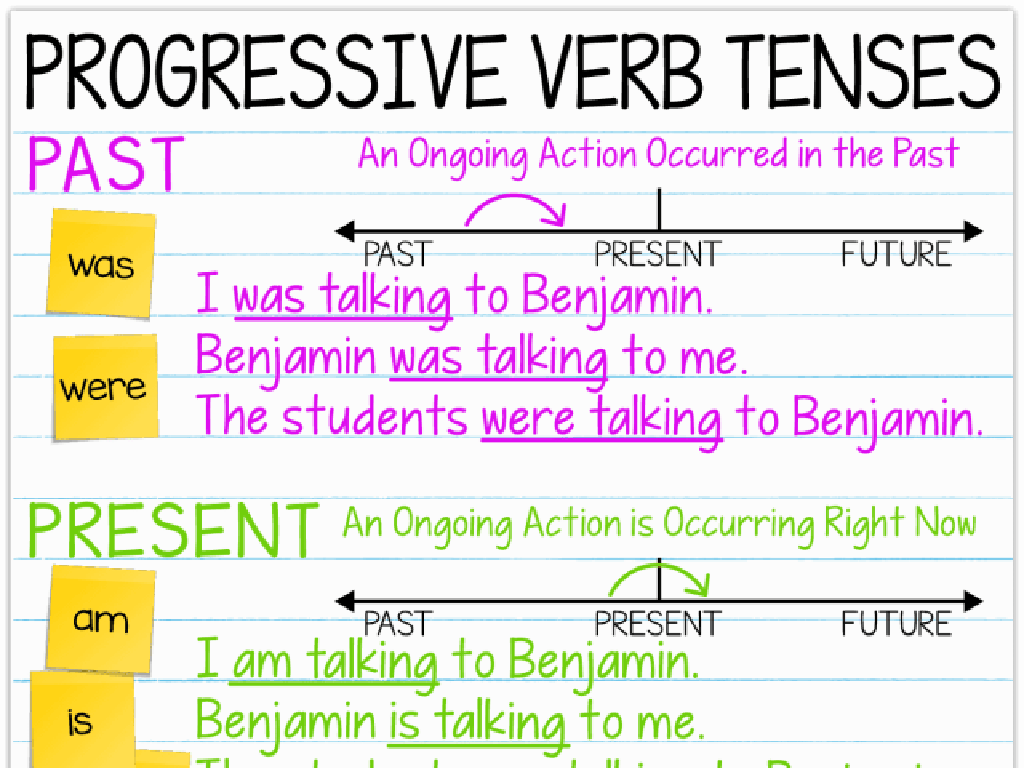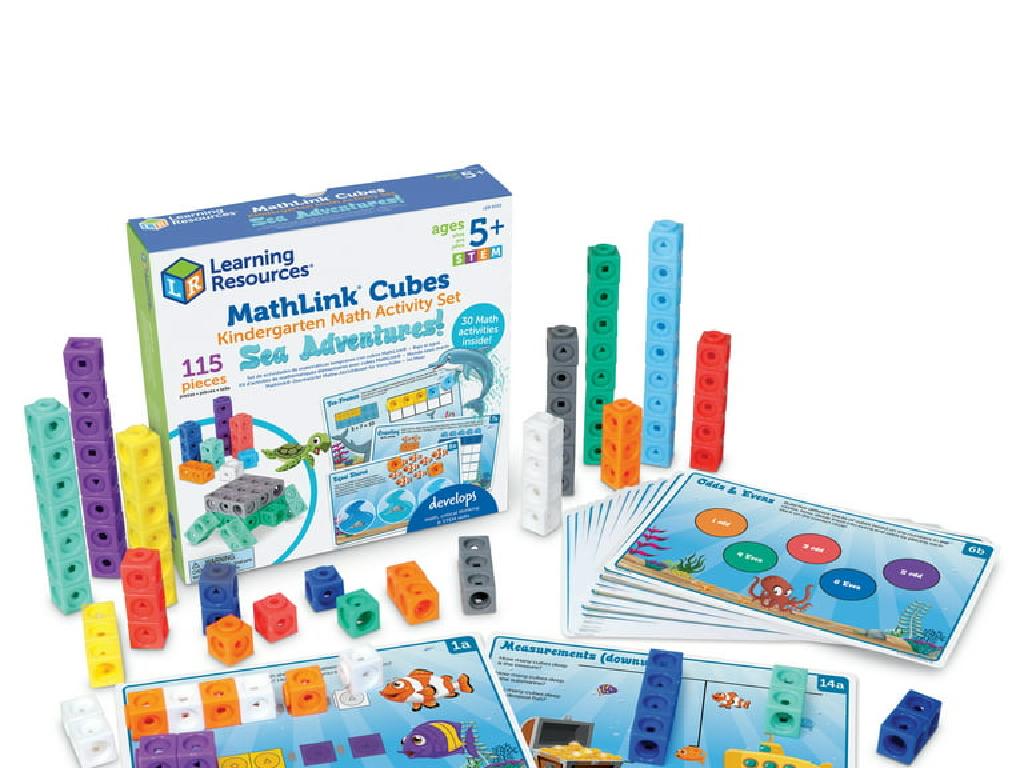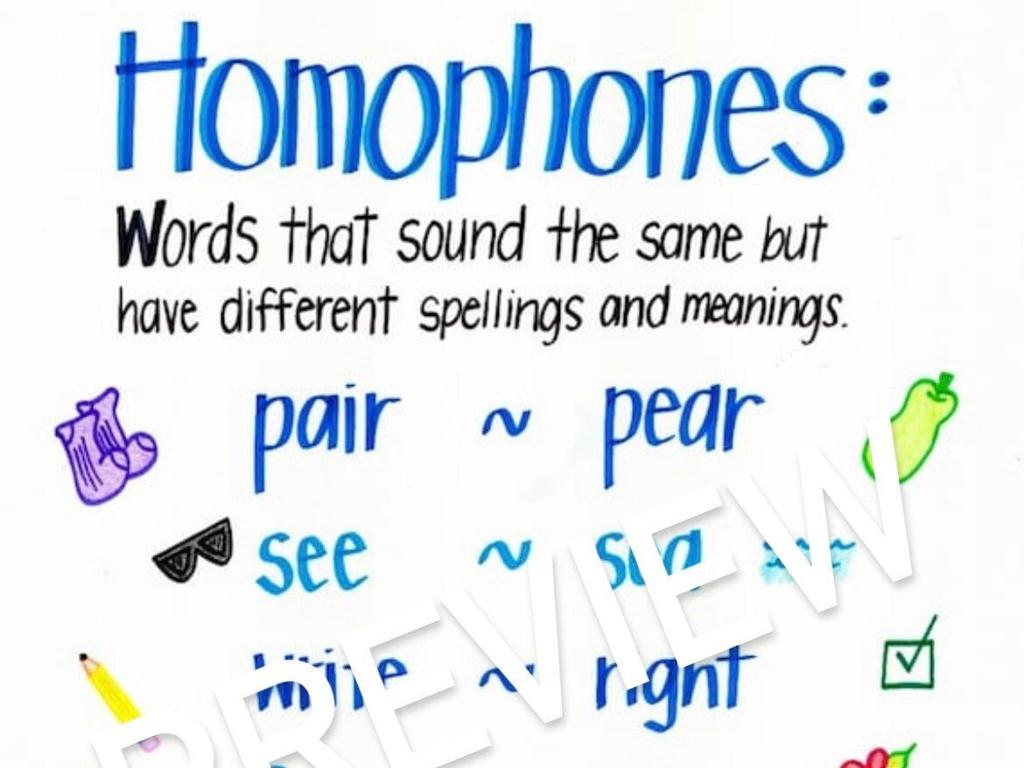Count Vertices, Edges, And Faces
Subject: Math
Grade: Second grade
Topic: Three-Dimensional Shapes
Please LOG IN to download the presentation. Access is available to registered users only.
View More Content
Exploring 3D Shapes
– Learn about 3D shapes
– Discover cubes, spheres, pyramids
– Cubes have 6 faces, 8 vertices, 12 edges
– Count vertices, edges, and faces
– Vertices are corners, edges are lines, faces are flat surfaces
– Master 3D shape properties
|
This slide introduces students to the concept of three-dimensional shapes, which are objects with length, width, and height. Use physical models of a cube, sphere, and pyramid to show these shapes from different angles. Explain that vertices are the points where edges meet, edges are the lines where faces connect, and faces are the flat surfaces. Have students practice counting these on various 3D shapes. By the end of the lesson, students should be able to identify and count each element on simple 3D shapes. Encourage hands-on interaction with the shapes for better understanding.
Exploring 3D Shapes
– What are 3D shapes?
– Solid objects with length, width, and height
– Dimensions of 3D shapes
– They have three dimensions: length, width, and height
– 3D vs. flat shapes
– Understanding depth
– Depth makes 3D shapes different from flat shapes
|
This slide introduces second-grade students to the concept of three-dimensional shapes. Begin by explaining that 3D shapes are solid objects that can be held and moved around. Highlight the three dimensions length, width, and height which are measurements that define the size of the shapes. Contrast 3D shapes with flat shapes by discussing how flat shapes only have length and width, lacking depth. Use examples like a box (3D) versus a drawing of a square (flat) to illustrate the concept of depth. Encourage students to think of examples of 3D shapes they encounter in their daily lives, such as balls, cans, and boxes.
Exploring 3D Shapes: Vertices, Edges, and Faces
– Vertices: the shape’s corners
– Like the tip of a pyramid or a cube’s corner
– Edges: the lines where faces meet
– The edge is where two faces join, like the side of a box
– Faces: the flat surfaces
– Each flat side, like a dice shows with each number
– Let’s count them together!
|
This slide introduces the basic components of three-dimensional shapes to second-grade students. Vertices are the points or ‘corners’ of a shape where two or more edges meet. Edges are the straight lines where two faces of a shape connect. Faces are the flat surfaces that make up the boundaries of a 3D shape. Encourage students to touch and count these elements on physical models of shapes such as cubes, pyramids, and prisms. Use everyday objects like boxes, balls, and cans to help them relate these concepts to real-world items. This tactile approach will help solidify their understanding of 3D shapes and their properties.
Counting Vertices on a Cube
– What are vertices?
– Vertices are corners where edges meet
– A cube has 8 vertices
– Let’s count them together
– Look at each corner of the cube
– Can you find all the vertices?
– Use your fingers to point at each one
|
This slide is aimed at helping second-grade students understand and identify vertices on three-dimensional shapes, starting with a cube. Begin by explaining that vertices are the points where two or more edges meet, essentially the ‘corners’ of a shape. Show them a cube and point out each vertex, encouraging them to count along. Ask the students to find and count all the vertices on their own cubes if available, or on a diagram if not. This exercise will help solidify their understanding of vertices and how to identify them on three-dimensional shapes.
Counting Edges of a Cube
– What are edges on a cube?
– A cube has 12 edges
– Each line where two faces meet is an edge
– Trace edges with your finger
– Use your finger to follow the lines
– Count each edge together
– Practice counting from 1 to 12 as we trace
|
This slide is focused on teaching second-grade students how to count the edges of a cube. Begin by explaining what an edge is: the line where two faces of a shape meet. Emphasize that a cube has 12 edges and encourage students to use their fingers to physically trace each edge. This tactile activity helps reinforce the concept and aids in memorization. As you guide them through the process, count out loud together, ensuring that they understand that each edge is counted only once. This exercise not only teaches them about edges but also reinforces counting skills.
Counting Faces of a Cube
– Understanding a cube’s faces
– Faces are the flat surfaces of a 3D shape
– A cube has 6 faces
– Like the pages of a book, a cube has 6 flat sides
– Naming each face while counting
– Top, bottom, left, right, front, back
|
This slide is aimed at helping second-grade students understand and identify the faces of a cube, which is a fundamental concept in learning about three-dimensional shapes. Start by explaining what faces of a 3D shape are, comparing them to something familiar like pages of a book or sides of a box. Then, guide the students to count the faces of a cube, ensuring they understand that there are 6 distinct faces. Encourage them to touch and name each face as they count to reinforce their learning. This tactile and visual approach helps solidify their understanding of the concept. You can bring in a physical cube for demonstration or draw one on the board to make the learning process interactive.
Exploring Other 3D Shapes
– 3D shapes have unique features
– Examine a pyramid’s characteristics
– A pyramid has a base and pointed top. How many faces, edges, and vertices?
– Explore a sphere’s surface
– A sphere is like a ball. Can we find edges or vertices on a sphere?
– Count a cylinder’s elements
– A cylinder has circular ends. Let’s count the faces and edges together.
|
This slide aims to help students recognize that different three-dimensional shapes have varying numbers of vertices, edges, and faces. Introduce the pyramid, sphere, and cylinder, and guide the students to count these elements on each shape. For the pyramid, focus on the base shape and the apex. For the sphere, discuss the absence of vertices and edges. For the cylinder, highlight the circular faces and curved edge. Use physical models or illustrations to help students visualize and count. Encourage hands-on interaction if possible. This activity will solidify their understanding of 3D shapes and their properties.
Class Activity: Shape Exploration
– Explore 3D shapes hands-on
– Each student receives shape models
– Count vertices, edges, and faces in pairs
– Vertices are corners, edges are lines, faces are flat surfaces
– Discuss findings with the class
|
In this interactive class activity, students will engage with physical 3D shape models to better understand the concepts of vertices, edges, and faces. Distribute various 3D shapes to the students and have them work in pairs to touch and count each geometric feature. This tactile experience reinforces their learning and makes abstract concepts more concrete. After the counting activity, facilitate a discussion where pairs can share their findings and reflect on any patterns they noticed. Possible shapes to include are cubes, pyramids, and cylinders. Encourage students to use correct mathematical language when discussing their observations. This activity not only helps with the identification and counting of geometric features but also fosters collaborative learning and communication skills.
Exploring 3D Shapes: Conclusion
– Excellent work on counting!
– 3D shapes are everywhere
– Think of boxes, balls, and cans around you
– Keep exploring shapes
– Try to find shapes at home or school
– You’re becoming a 3D expert!
|
Congratulations to the students for their hard work in learning to count vertices, edges, and faces of three-dimensional shapes. Reinforce the idea that these shapes are not just in the classroom but are part of their everyday life. Encourage them to continue observing and interacting with 3D shapes outside of school to solidify their understanding. This will help them relate the math concepts to the real world, making the learning experience more tangible and enjoyable. As they become more familiar with these shapes, they will start to see the world from a mathematical perspective, recognizing patterns and geometry in their environment.






